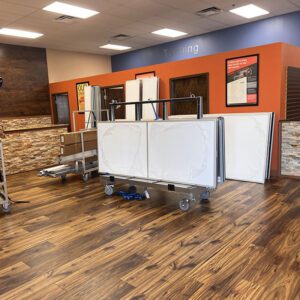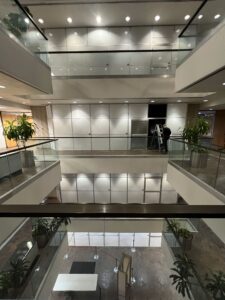How Modular Wall Systems Support LEED Certification in Green Building Projects
Building Sustainably With LEED Certification
The path to a greener future lies in how we construct the spaces we live, work, and grow in. Leadership in Energy and Environmental Design (LEED) certification has emerged as the global standard for sustainability in building projects, aiming to transform the way we think about energy efficiency, resource conservation, and indoor environmental quality. Whether it’s a commercial complex or a healthcare facility, achieving LEED certification elevates the project’s environmental performance while enhancing its value.
The Role of Modular Wall Systems in Sustainable Construction
Modular wall systems are a versatile, reusable construction solution designed for temporary or permanent applications. Unlike traditional construction materials such as drywall, which often generate landfill waste, modular walls are made to be reusable and fully recyclable. This inherent sustainability is one of the reasons they’re rapidly becoming a staple in green building projects.
Benefits of Modular Walls for LEED Certification
Modular wall systems provide several distinct advantages when pursuing LEED certification. Below are a few ways they directly contribute to your project’s sustainability goals.
Reduction in Construction Waste
Traditional drywall construction generates significant waste—nearly 25% of all waste in landfills comes from construction debris. Modular walls, on the other hand, are highly reusable. Their adaptable design allows them to be installed, reconfigured, and relocated without generating scrap material. This reduces on-site waste and helps your project earn credits in the Material and Resources (MR) category of LEED certification.
Eco-Friendly Materials
Many modular wall products are designed with sustainability in mind. They often include recycled materials, such as post-consumer aluminum or steel, which supports LEED’s guidelines on the use of sustainable resources. Additionally, the recyclability of these materials ensures minimal environmental impact at the end of the product lifecycle.
Improved Energy Efficiency
Modular walls can contribute to LEED certification by improving energy efficiency. For instance, many include insulation or soundproofing layers that enhance energy performance by maintaining better thermal comfort indoors. This can earn points in the Energy and Atmosphere (EA) credit category, particularly around optimizing energy use.
Indoor Environmental Quality
Indoor air quality is critical in achieving LEED certification. Modular wall systems often utilize low-VOC (volatile organic compound) materials, which improve indoor air quality by reducing harmful emissions. This performance aligns with the Indoor Environmental Quality (IEQ) credits, ensuring healthier, more comfortable spaces for occupants.
Efficient Construction Process
Modular walls streamline the construction process. Their pre-fabricated components reduce the time, energy, and labor required for installation. Because they are easy to install and disassemble, they also accelerate timelines, reducing the overall carbon impact of the project.
Choosing the Right Modular Wall System for Your Project
When integrating modular wall systems into your green building project, selecting the right product is essential. Here are a few aspects to look for to ensure compatibility with LEED standards:
Material Quality and Certifications
Opt for modular walls made from materials with environmental certifications. Seek out products that use recycled or renewable materials and meet third-party standards such as Cradle to Cradle certification or Environmental Product Declarations (EPDs).
Flexibility and Reusability
The ability to repurpose modular walls for future projects is a game-changer in sustainable construction. Ensure the system you choose is designed for easy reconfiguration and relocation, allowing it to be reused multiple times.
Low VOC Content
To safeguard indoor air quality, prioritize modular walls that are certified for low volatile organic compound (VOC) emissions. Look for certifications such as GREENGUARD or similar indicators.
Thermal and Acoustic Performance
Consider modular walls with added benefits such as thermal insulation and sound absorption. These features not only enhance building comfort but also contribute to optimizing energy efficiency and earning LEED credits related to both energy and indoor environmental quality.
Manufacturer Commitment to Sustainability
Partner with manufacturers that share your commitment to green building. Many industry leaders are transparent about their sustainability practices and offer support in documenting their products’ contribution to LEED certification.
Modular Walls as a Key to LEED Success
For architects and construction managers aiming to achieve LEED certification, modular wall systems provide an efficient, sustainable, and practical solution. Their adaptability, reusability, and eco-friendly materials not only support high environmental performance but also simplify the path to meeting LEED criteria.
If your next project aims to merge environmental responsibility with cutting-edge building practices, modular walls are a clear choice. By integrating these systems into your design, you’re not just constructing buildings—you’re creating sustainable spaces that embody innovation, responsibility, and lasting value.


